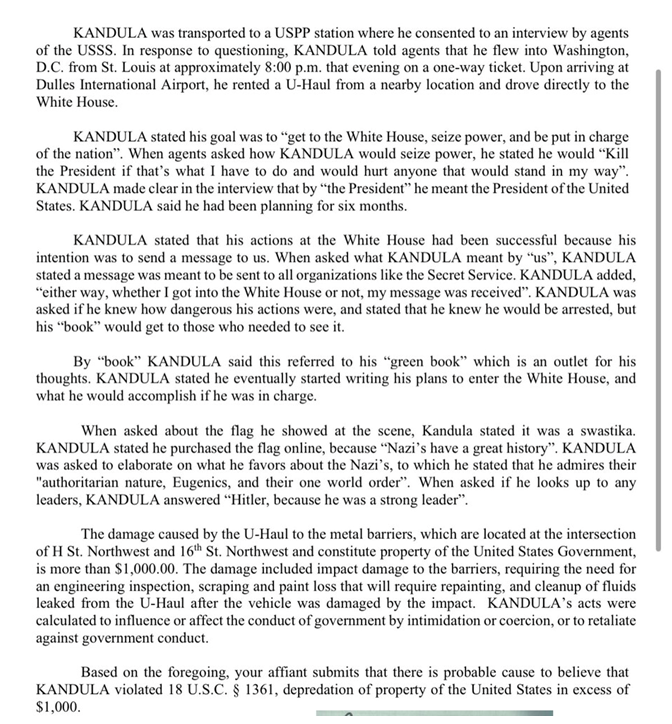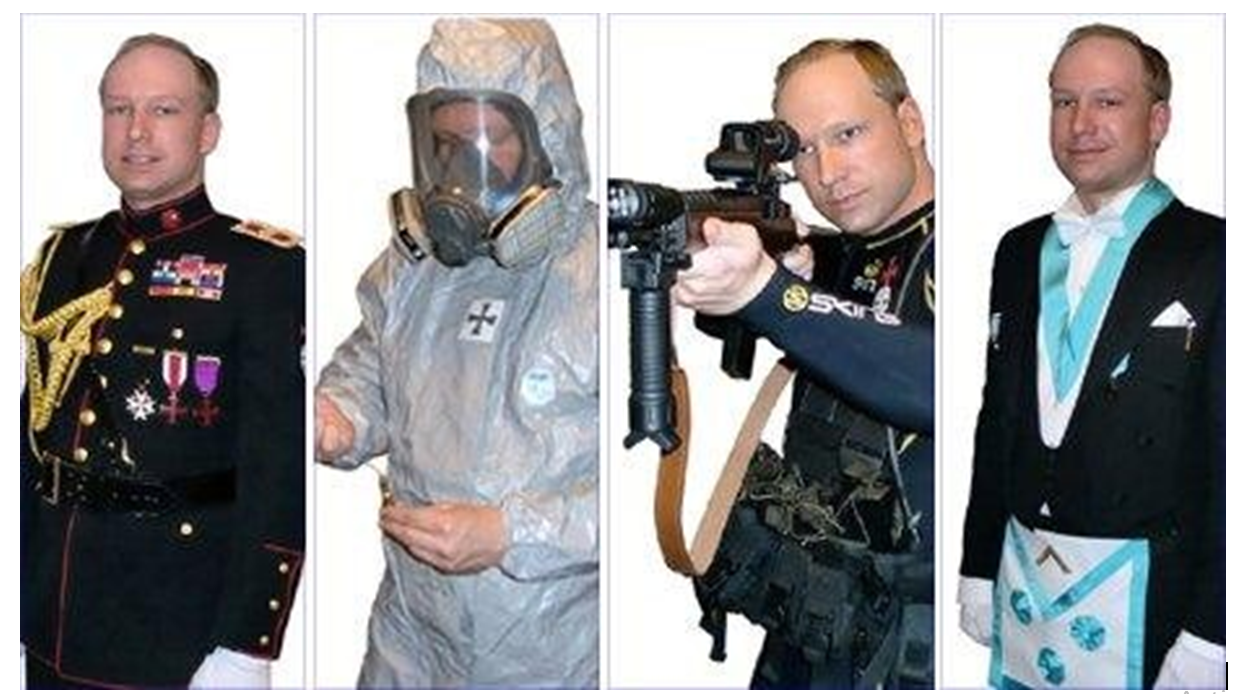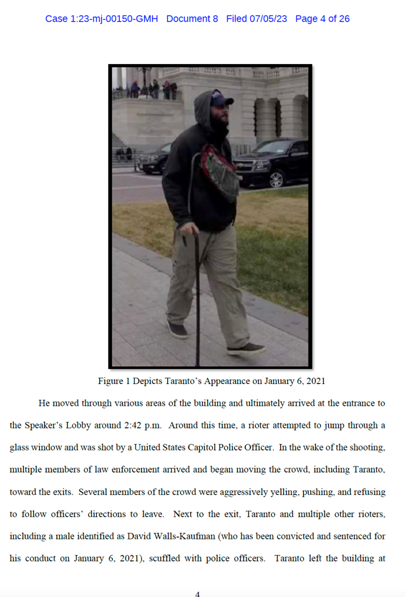From my 2023 global risk & intelligence forecast: “I assess that this year in the U.S. there will be an assassination attempt against a national-level, elected U.S. politician.”
Last Wednesday the Federal Bureau of Investigation (FBI) shot and killed Craig Deleeuw Robertson, a United States Air Force veteran who had threatened New York County (Manhattan) District Attorney Alvin Bragg, New York State Attorney General Letitia James, California Gov. Gavin Newsom, Attorney General Merrick Garland, Vice President Kamala Harris, President Joe Biden, and the FBI special agents who investigated Robertson. Robertson lived in Provo, Utah, less than an hour south of Salt Lake City. Robertson allegedly appeared to point a gun in the direction of the law enforcement agents who then fired, killing Robertson–hours before Biden arrived in Salt Lake City.
On June 29 law enforcement agents arrested US Navy veteran and alleged Jan 6 insurrectionist Taylor Taranto near the home of former President Obama, according to news media reports. In addition to threatening the former president, the previous day he appeared to threaten the National Institute of Standards and Technology (NIST) and U.S. House of Representatives Speaker Kevin McCarthy. He also threatened Maryland Rep. Jamie Raskin in mid-July.
In May nineteen-year-old, self-admitted Nazi sympathizer and admirer Sai Varshith Kandula apparently attempted to use a large U-Haul truck to attack the White House. Security bollards at Lafayette Square, adjacent to the White House, thwarted his plan. Public safety officials evacuated at least one hotel in the vicinity of Lafayette Square (the truck was later found to not contain explosives).
In March a Michigan man, Randall Berka II, was arrested for illegally possessing guns and is accused of threatening Michigan Gov. Gretchen Whitmer, President Biden, and other Democratic politicians.
The vast majority of threats against politicians and non-politicians alike are never carried out. However, many/most threats should be still taken seriously as a threat could be one of the minority of threats that is credible. And sometimes, albeit rarely, ignoring a threat could cause the person of concern to act upon his/her threat.
Pathway to Violence

The “pathway to violence” concept can assist in differentiating the “howlers” who only “howl” their threats, from the “hunters” who would actually carry out their threats (although the difference between “howlers” and “hunters” is not always so simple).

Kandula traversed the entire pathway to violence, culminating in his use of the U-Haul truck in an attempt to attack the White House. Based on court documents, he likely had a grievance (which presumably resulted in his desire to seize power), clearly had violent ideations (as evidenced by his desire to “kill the president”), presumably had to research and plan his trip from St. Louis to Dulles Airport in northern Virginia to the U-Haul rental location and then to the White house, and his attempt to attack the White House was captured on video.
Taylor Taranto progressed to the pre-attack preparation and likely even the probing & breaching phase of the pathway to violence. He likely had to conduct research and planning to find and go to former President Obama’s neighborhood (no doubt made easier after “former President Donald Trump posted screenshots on his Truth Social platform that featured a purported address for Obama’s home in Washington, D.C. Taranto’s account reposted Trump’s post”) and the NIST parking lot–where he made his threat against the organization. According to the prosecutor’s motion for his pre-trial detention, while in former President Obama’s reported neighborhood, Taranto livestreamed that he was looking for “entrance points,” that he had “control” of the block and “had them surrounded” and that he was going to find a way to the “tunnels underneath their houses.” The court filing also alleges that during the livestream he repeatedly stated that he was trying to get a “shot” and that he wanted to get a “good angle on a shot.”
Beyond the pathway to violence, additional warning behaviors are present in these recent cases of threats and attempts made against U.S. presidents and other public officials.
Weapons
In at least three of the four aforementioned cases, the suspects possessed weapons (and in the fourth case, a U-Haul truck was used as a weapon).
Craig Robertson bragged about and posted pictures of his 9mm pistol, nine semi-automatic rifles, and his attempt to obtain three additional rifles to prepare for the 2024 election cycle, according to the criminal complaint prosecutors filed before his death.
Taylor Taranto, the man who was arrested near former President Obama’s home, allegedly had two guns, a machete, 400 rounds of ammunition, and the materials to make some kind of explosive device akin to a Molotov cocktail in his nearby van. Most likely his mother bought him those four or five guns he illegally possessed. Last week she was charged with lying when she bought five guns that were eventually given to another person–likely her son.
Previous Violence
Taranto has allegedly engaged in prior violence. He is charged with four misdemeanors related to his involvement in the January 6 U.S. Capitol breach, including one count of disorderly and disruptive conduct in a restricted building. Prosecutors allege that Taranto picked up and threw pieces of metal scaffolding that were stacked on the ground. Taranto also allegedly joined multiple other rioters in scuffling with police officers at the Capitol.
Identification Warning Behavior

Identification warning behavior includes the desire to be a pseudocommando or have a warrior mentality. It can manifest as a close association with weapons or other military or law enforcement paraphernalia.
Anders Behring Breivik, who in 2011 murdered 77 people in Norway, displayed identification warning behavior with the outlandish outfits he created. He never served in any military or law enforcement entity. In a call to law enforcement to supposedly surrender, he claimed to be ” Commander Anders Behring Breivik of the Norwegian Anti-Communist Resistance Movement.”

Craig Robertson, the Air Force veteran who the FBI shot and killed last week, appears to have displayed pseudocommando or warrior mentality behavior based on his social media profiles and posts. Some of these profiles and posts are included in the aforementioned criminal complaint prosecutors filed before his death. One of the most concerning in terms of identification warning behavior is his supposed Facebook profile picture (not included in the criminal complaint).

His numerous social media posts that combined pictures of his weapons with his threats against public officials, such as his threat against AG Garland, are also disturbing (there does not appear to be any publicly available indications that Robertson progressed beyond violent ideation along the pathway to violence in terms of the public officials he threatened).
State and Local Officials
Threats against state and local officials have also increased over the last few years, although they do not garner the same level of attention as violent transgressions against U.S. presidents. According to recent research by the University of San Diego, in San Diego County “nearly 90% of all elected officials have either been threatened or harassed or have witnessed such abuse directed at their peers.” Seventy five percent of all elected officials in the county “reported being on the receiving end of threats and harassment. Of these, 47% reported the threats and harassment occurs monthly.” Threats against elections workers have also increased, especially during and since the 2020 presidential election cycle.
Vulnerability In and Around Vehicles
The U.S. is not the only country whose political leaders and aspirants have very recently faced assassination attempts. Last week Ecuadorian presidential candidate Fernando Villavicencio was assassinated, shot through his vehicle’s window, immediately after he entered the vehicle following a campaign event. As I wrote in my 2023 global risk & intelligence forecast about the threat to U.S. politicians,
“I assess that any assassination attempt(s) against a national-level politician will likely occur in or around the protectee’s vehicle, where he/she is most vulnerable. The majority of assassination attempts against VIPs occur in and around their vehicle, and the majority of these attempts are successful….The area between a building’s facade and the protectee’s vehicle–the distance the VIP must traverse on foot–is particularly vulnerable.”
In my forecast I also noted that by my count, globally at least 20 politicians, judges, government ministers, senior military officers, police chiefs, nuclear scientists, and diplomats have been victims of assassination attempts and assassinations between 2020 and 2022 while they were in or near their vehicles. Villavicencio, an anti-corruption crusader who also fought against organized crime, has joined that list.
Outlook
Expect the current trend of increased threats and attempted attacks against public officials at all levels in the U.S. to continue due to this country’s extreme political polarization and also endemic disinformation and misinformation. Awareness of the pathway to violence, violence warning behaviors, and protectee vulnerabilities are vital, especially for public figures who are not provided security measures commensurate with the threats they face.



